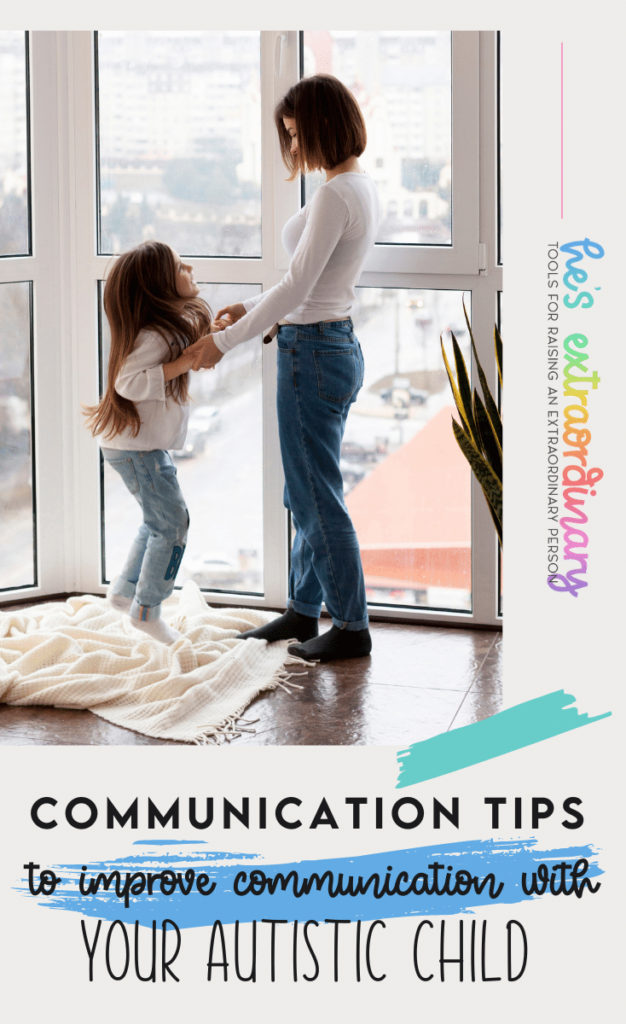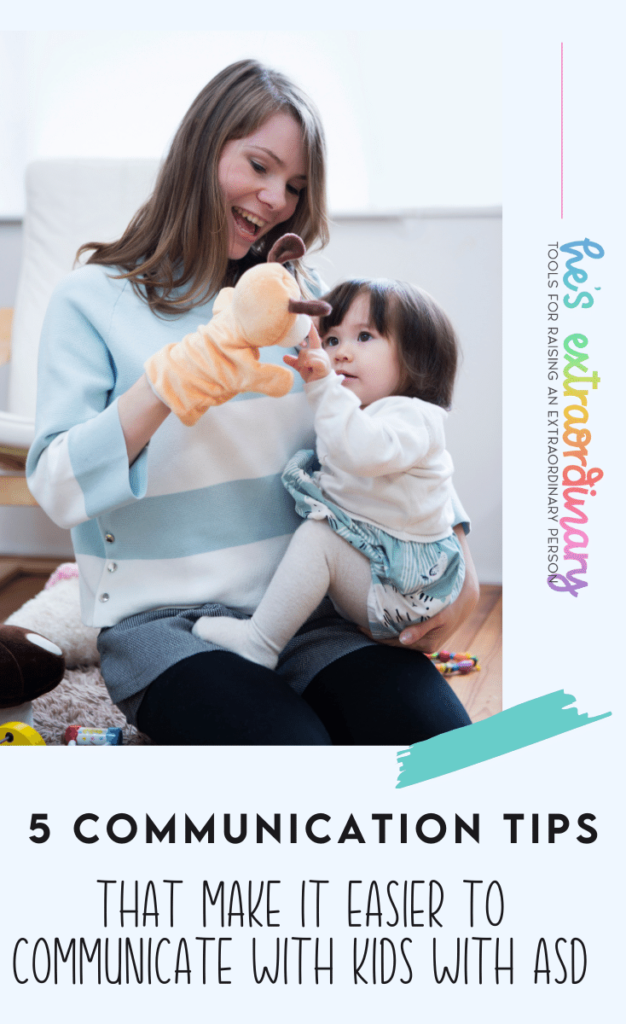5 Tips That Make It Easier To Communicate With Your Autistic Child
What’s inside this article: Tips to help YOU, the adult, improve your communication and optimize your language, so you can communicate better with your autistic child.
Communication is the act of conveying intended meanings from one person or group to another through mutually understood signs and semiotic rules.
The sender delivers a message through a channel to the receiver. The receiver provides feedback.
This is part of a 13 part series. Each post in the series will explain an evidence-based strategy used by professionals for managing behavior with children on the autism spectrum. Each part of this series will contain a table of contents so you can easily navigate to the different strategies.
Table of Contents
- Introduction
- Build a Relationship
- Individualize Motivation
- Observe, Listen, then Join
- Optimize Language
- The Premack Principal
- Basic Redirect
- Breaks
- Picture Rehearsal
- Add Structure at Home
- Teach Independence with Prompting
- Transactional Supports
- Add Structure to the Learning Environment
How to Optimize Your Language
As adults, we can understand and adapt our language when communicating with an autistic child. If your child has autism you should have a good idea of what level their current communication skills are.
Using this knowledge you can meet your child on their level, and optimize your language, improving the communication process by making it easier for them to understand you.
1. Talk More Slowly
Individuals with autism often take longer to process the messages they receive. Talking more slowly allows extra processing time for your child to decode your message.
Don’t repeat yourself if you don’t immediately get a response. Also, processing time increases when children are upset.
Imagine if you were working on a 100 piece puzzle, and halfway through completing it, someone dumped another 100 piece puzzle on top of it.
It makes it much harder to put the puzzle together.
The same applies to the brain as it’s trying to decode a message, you have to give your child enough time to
2. Mirror Their Language
Use similar language to your child to help them understand you better.
If they speak in two-word phrases – don’t give them a
Matching your child’s language and choosing words that are
3. Use Exaggerated Facial Expressions
Facial expressions indicate emotion
To optimize your language it’s helpful to exaggerate your facial expressions to make it easier for your child to process the emotion behind the communication.
Being very intentional with your facial expressions is also useful.
Did you know that the reason the trains in Thomas & Friends have very exaggerated facial expressions is so kids can understand how the trains are feeling? This may be why it’s such a popular TV choice for kids with ASD.

4. Exaggerate Your Body Language and Gestures
Like facial expressions – exaggerating your body language and gestures can also make it easier for your child to decode your message.
Adding and exaggerating your body language in your verbal communication with your child provides a visual support that stands out and can increase the meaning of the communication.
Pointing, clapping, pushing away, stomping, etc are all examples of ways you can optimize your language by exaggerating your body language and gestures.
5. Choose The Right Channel
Some individuals with autism have trouble decoding a message when it’s coming from more than one channel at the same time. It’s more sensory input to process and decode at once.
So choose the channel your child communicates best with – it could be a visual, like PECs, verbal, written words, etc.
Tito
“I can either see or hear – I can’t do both at the same time”
Did Your Child Understand Your Message?
Communication goes both ways. It’s critically important for your child to understand you. If they don’t understand what you’re saying then you can’t communicate with your autistic child at all.
You should be looking for cues when speaking to your child to show you that they do understand what you’ve said. Being able to repeat what you said does not mean they understood.
The best indicator is whether or not they respond in an appropriate way to your message.
Related: 9 Strategies to Build Listening Skills & Oral Language Comprehension
If they understand they will also respond the same way in a variety of situations and circumstances. This is how you can tell for sure it isn’t a scripted response.
Keep in mind that children with autism often interpret language literally.
For example, if your child asks if they can watch TV and you say “in a minute” and then they go watch TV, they probably understood your message as “In 60 seconds I have permission to watch TV”.
Once a teacher told my son that he “couldn’t leave until all the books were picked up” and my son actually urinated in his pants because he believed he had to stay there until he picked up all the books and didn’t even ask the teacher if he could use the washroom because he took her first message exactly as she said it.
Needless to say, she was not able to communicate with any autistic children very well.
Continue to: Strategy 5 – The Premack Principle



